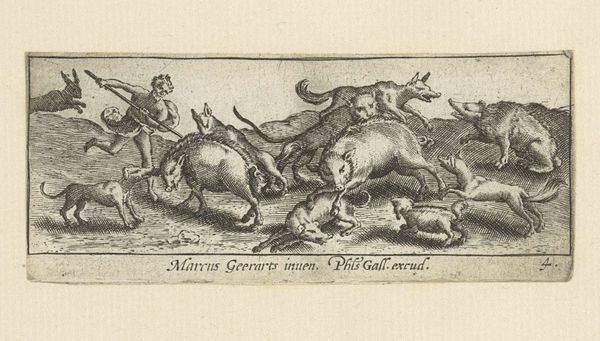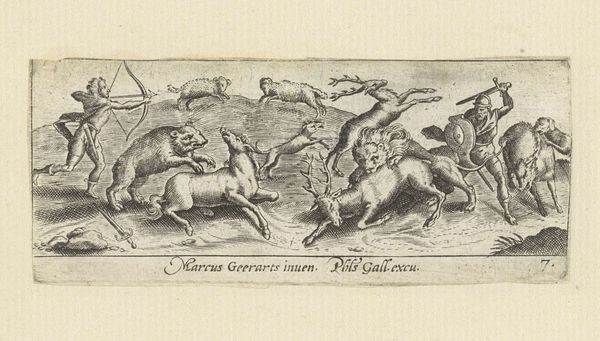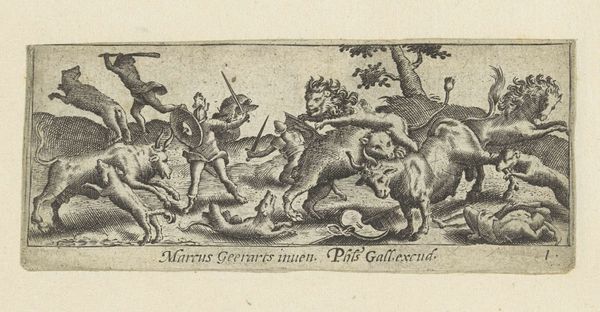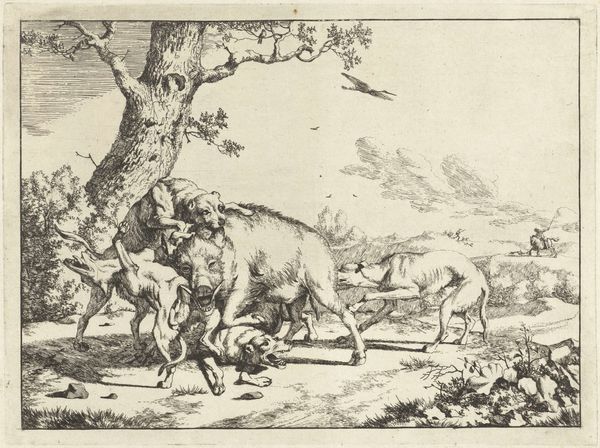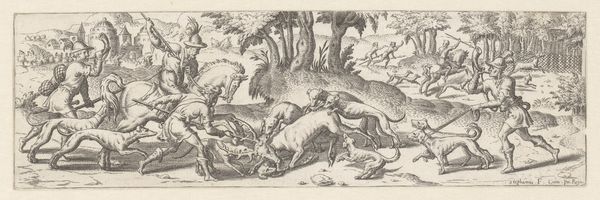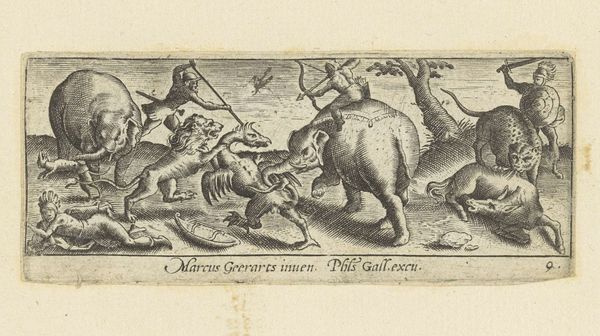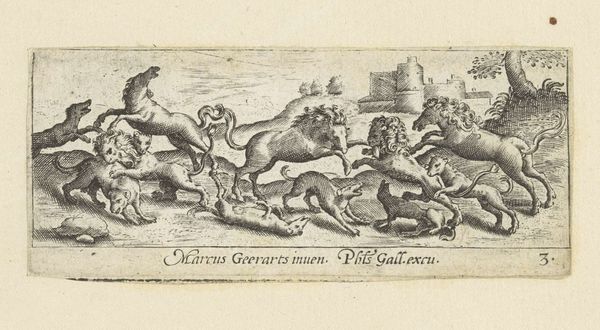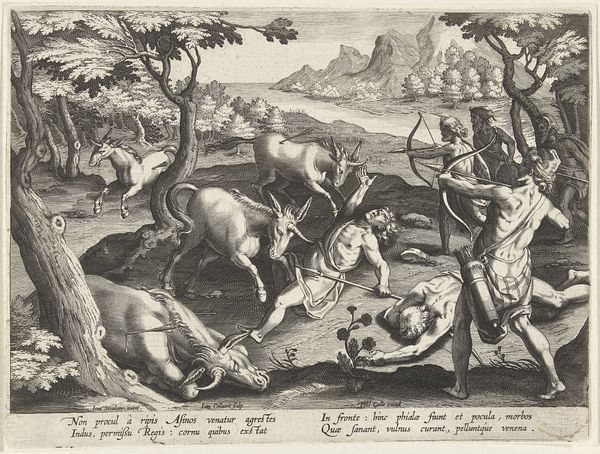
print, etching, engraving
# print
#
etching
#
landscape
#
mannerism
#
genre-painting
#
engraving
#
realism
Dimensions: height 39 mm, width 93 mm
Copyright: Rijks Museum: Open Domain
Editor: Here we have Marcus Gheeraerts' "Hunters Hunting a Deer," created sometime between 1570 and 1612. It's an etching and engraving. It feels… frantic. The composition is a jumble of bodies and motion. What do you see in this piece, from a formalist perspective? Curator: Immediately, I am struck by the dynamism achieved through line. Note how the artist uses hatching and cross-hatching to create a sense of volume and movement across the shallow plane. It’s almost Mannerist in its deliberate distortion. Where does your eye travel? Editor: I’m drawn to the center, where the dogs are attacking what looks like a boar, it’s like everything is converging on that point, though that stag running in the opposite direction is very striking as well. Does this contribute to the piece? Curator: Precisely. The artist masterfully employs opposing directional lines to establish tension. This deliberate visual conflict—the pull and push of forms—enhances the overall sense of chaos and energetic pursuit. This goes beyond realism, despite what a cursory glance may suggest. The question becomes, does the artist employ these formal devices to convey narrative meaning, or do these devices *become* the meaning? Editor: That’s a great question; I guess I hadn’t thought about form creating the narrative. Thanks for clarifying; I learned a lot by examining lines, shapes and forms and what they convey! Curator: Likewise; looking at the intrinsic nature and interplay of elements can truly unlock deeper insight to a piece and its structure.
Comments
No comments
Be the first to comment and join the conversation on the ultimate creative platform.
